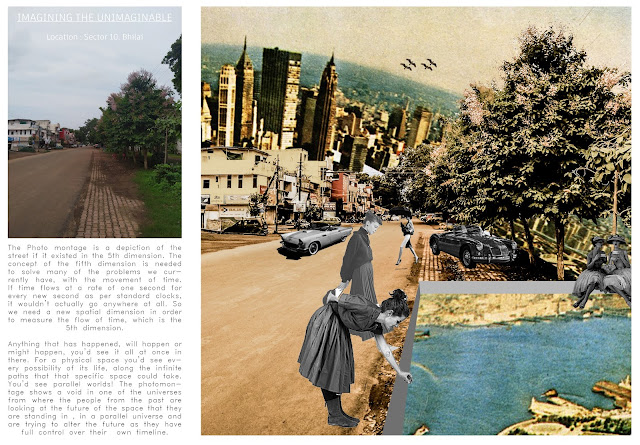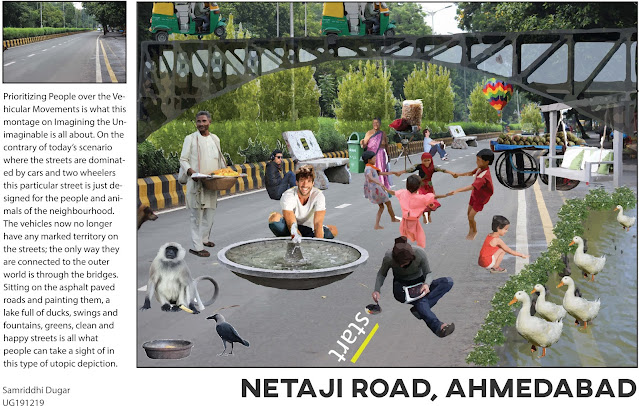Week 3: Crafting the Edge - PHOTOMONTAGES
In this exercise, each student prepared two photomontages. In the first one, they used a photograph from IIM Bangalore - as the background; and superimposed images from their own streets, in their own neighbourhoods - as the foreground. In the second one, they were asked to use their own street - as the background; and create an imaginary condition to reflect utopia or a real-life situation that they might like to see as the future of their city. The exercises of Week 1, 2 & 3 - the audio walk, the threshold maps and the photomontages have been on the one hand, different methodologies to understand the everyday city; and on the other hand, a reflection of the back and forth between 'the real and the unreal' that we have been subjected to soon after the pandemic happened. Some have pointed out that the pandemic happened because man has tried to overtake nature and others who say that man is himself a part of nature. It seems then that our fallacy lies not in believing tha












